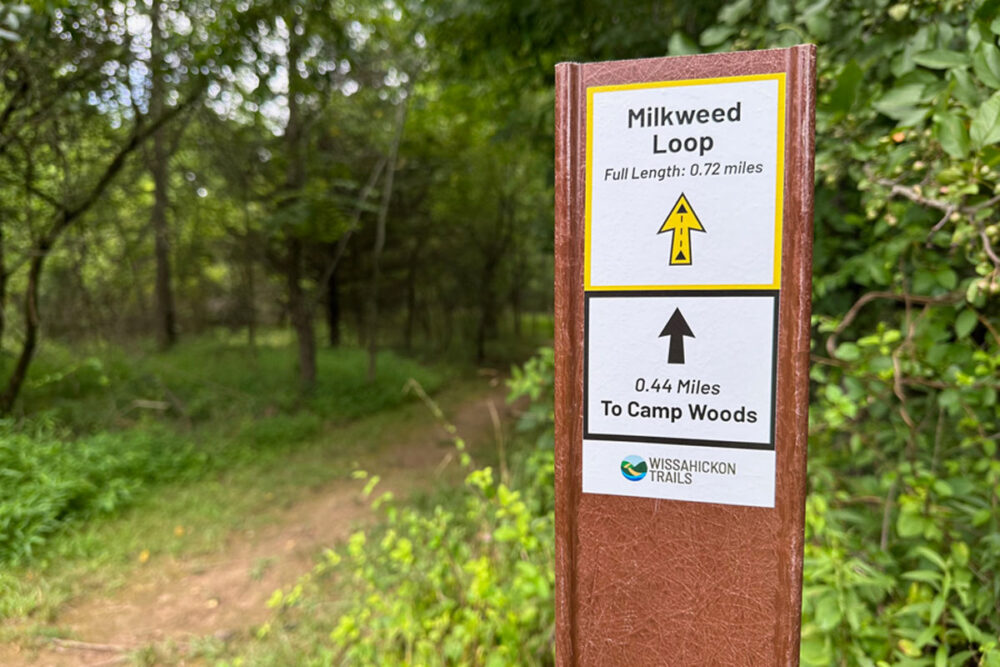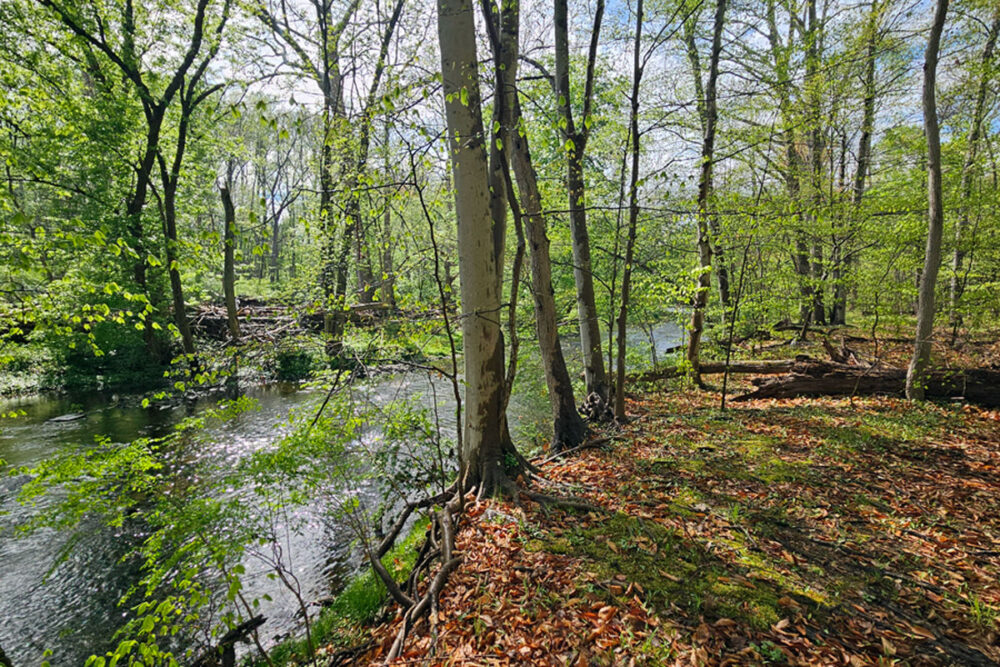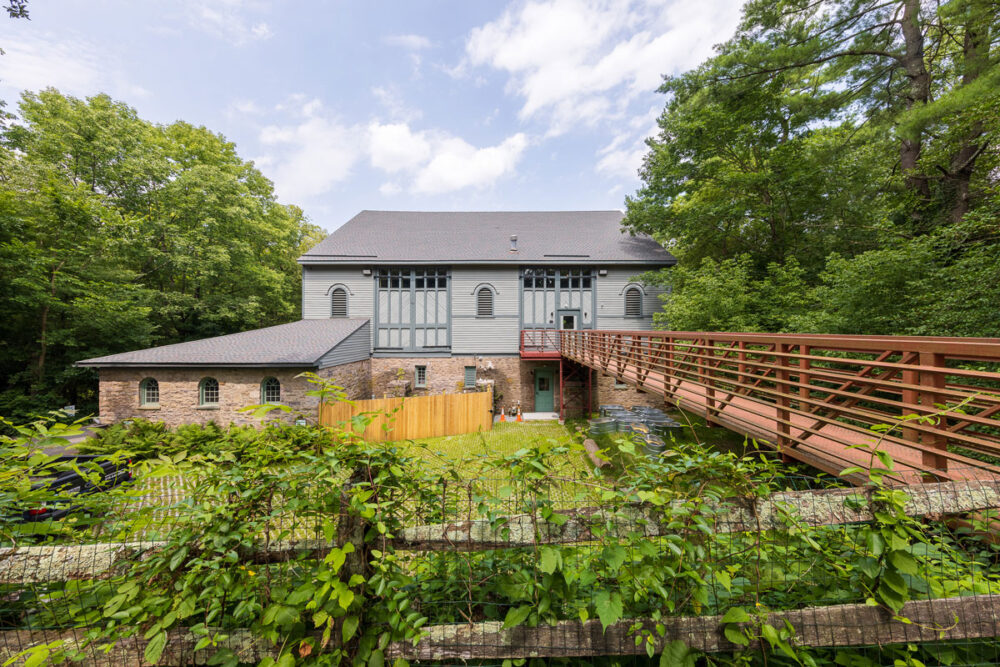
Wissahickon Trails connects land, water, and people
The upper portion of the watershed is ready to be discovered
Ask any Philadelphian to conjure up an image of the Wissahickon, and they’re likely to picture leafy Forbidden Drive, its wide gravel path meandering alongside sights like the Valley Green Inn.
But there’s an entirely different Wissahickon just upstream, replete with its own trails, preserves, and historic landmarks.
It’s a tale of two Wissahickons: the lower and upper segments of the creek. While the lower portion of the watershed – within Philadelphia – is tended to by Friends of the Wissahickon, its Montgomery County counterpart, Wissahickon Trails, stewards the land and water to the north.
And, as it turns out, there is no shortage of land and water to conserve beyond Forbidden Drive. Since 1957, Wissahickon Trails has protected 1,300 acres of open space – equivalent to the size of Center City. Within that space are 24 miles of trails and 12 nature preserves. Wissahickon Trails also offers events and engagement initiatives within the community.
“If folks in the city are looking for a chance to get away, we have that opportunity for them,” says Gabrielle Fatula, Communications Manager at Wissahickon Trails. “There’s a whole upper portion of the watershed that is ready to be discovered.”
Preserving land and making it accessible

Wissahickon Trails shares details about each of its preserves online, along with suggested itineraries to inspire your next walk. All trails are family and (leashed) dog-friendly. As a land conservation organization, Wissahickon Trails is continuously working to preserve more open space within the upper Wissahickon watershed, partnering with groups like Natural Lands and WeConservePA.
The Green Ribbon Trail is the organization’s most popular and longest trail, at 12.6 miles. City dwellers can access the trail (along with several preserves) using SEPTA’s Lansdale/Doylestown line (Ambler, North Wales, Penllyn, and Gwynedd Valley stops are nearby). Bus route 94 also serves the area. Despite SEPTA’s impending service cuts, those stations and routes are expected to remain operational.
On the Green Ribbon Trail, visitors will encounter historic landmarks like a fully operational gristmill built in 1745, Evans-Mumbower Mill, and Four Mills Barn, Wissahickon Trails’ headquarters.

“In the Wissahickon Valley Park [in Philadelphia] there’s a lot of elevation, ups and downs,” says Fatula, “Whereas, I’d say there’s not as much here. It’s a nice change of pace. There are a lot of birding and wildlife opportunities.”
A few years ago, Wissahickon Trails hired an accessibility consultant to hike each of its trails and offer feedback on making the spaces more inclusive.
Now, the organization is updating signage and its website to make trail conditions and accessibility information transparent. New wayfinding systems are being implemented, including in Armentrout Preserve and Camp Woods.
The accessibility audit “gave us a road map for the next ten years,” says Erin Landis, Water Programs Manager at Wissahickon Trails. “We’re going to have to get more grants to fund this. It’s something that we’re going to be looking at long term.”
Partnering to protect the Wissahickon Creek
Water stewardship programs at Wissahickon Trails aim to protect the 116 miles of the Wissahickon Creek and its tributaries, working in tandem with the local government, educational institutions, and other conservation organizations.
Staff conduct routine stream monitoring and assessment, coordinating with partners like the Academy of Natural Sciences and Stroud Water Research Center.
Through the Wissahickon Clean Water Partnership, Wissahickon Trails is collaborating with 13 watershed municipalities and four wastewater treatment plants to develop a water quality improvement plan. The coalition is particularly focused on stormwater management to reduce runoff (and associated pollution, flooding, and erosion). Solutions like rain gardens and naturalized stormwater basins – which mimic Mother Nature – are part of the plan.
“Everything you do upstream impacts downstream,” says Landis. “That’s how flooding works: the further downstream you go, the worse it gets.”
Fortunately, Wissahickon Trails and its coalition partners (including the Philadelphia Water Department) are aligned in their mission.
“It’s not very common to have the municipalities cooperating in such a close way, and it’s truly the best way to address water quality,” says Landis. “When each municipality–or little square of land–is managing things in a different way and not necessarily coordinating, it makes addressing these widespread watershed issues more difficult.”
Centering climate resiliency
Climate change has left its mark on Wissahickon Trails. Its paths flood multiple times a year during increasingly frequent extreme weather events. Rushing water damages footbridges across the creek.
Maintaining the trails poses a great challenge. Most are located alongside waterways, within floodplains.
The organization’s headquarters in the historic Four Mills Barn experienced two severe floods since 2020, necessitating a complete renovation. In doing so, care was taken to integrate “flood resilient” features, and offices were moved upstairs from the ground floor.
“A lot of thought goes into climate resiliency, to make sure that the preserves and trails that we do have–despite flooding and other natural events–are able to be enjoyed in perpetuity,” says Fatula. “There’s a lot of thought that goes into plant species, priorities, and projects to ensure the longevity of these preserves and properties for anyone to come visit at any point.”
Engaging with the upper watershed
Connecting people to the watershed is central to Wissahickon Trails’ mission. With a menu of volunteer opportunities, educational programs, and events, the organization offers options for everyone to engage with the land and water.
Creek Watch volunteers monitor the conditions of the Wissahickon and its tributaries, Conservation Crew members build footbridges, repair broken boardwalks, and remove invasive species. And residents in the Community Science program participate in fieldwork, collecting data on wildlife and habitats
For local schools, the trails and creek transform into an immersive classroom. More than 2000 students take part in curriculum-based education programs through Wissahickon Trails annually. Partnerships with Wissahickon School District, Germantown Academy, and the Center School (among others) have led to lessons on topics as wide-ranging as insects, historic water milling, and wetlands.
Wissahickon Trails hosts events throughout the year, including guided hikes and tours of the Evans-Mumbower Mill. Popular annual events like Craft Beer by the Creek, the Maple Sugaring Festival, and Creek Clean Up draw crowds. On September 27, the 29th annual Walk the Wissahickon will take place, with options for 3-, 8-,14-, and 21-mile hikes along the Green Ribbon Trail.
Whether they choose to sip a craft brew by the creek, collect data on water quality, or hike a half-marathon’s worth of miles, community members are welcomed and encouraged to engage with the upper Wissahickon.
“We want folks from all walks of life to feel invited and empowered to get outdoors,” says Fatula, “to improve their environmental literacy, to be able to enjoy all parts of the watershed.”
Cover photo: Tom Voter





